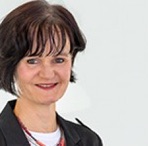Inequality: what should be done?
-
Overview
-
Background information11 Topics
-
What is inequality
-
History and presence of global inequality
-
Income inequality within countries and regions
-
Wealth inequality within countries and regions
-
Carbon Inequality
-
Vital inequality
-
Existential inequality
-
Drivers of inequality
-
What can be done about inequality?
-
How traditional welfare regimes deal with inequality
-
Tackling inequality in times of climate crisis
-
What is inequality
-
Endnotes
-
Glossary
-
References
-
Interactive learningDeepen your knowledge2 Topics
-
Training materialExercises for group activities6 Topics
Carbon Inequality describes the unequal responsibility for causing the climate crisis, by comparing contributions of Greenhouse Gas (GHG) emissions of different individuals, classes, social groups or countries, at one point or accumulated over time.
(Social) Class “refers to divisions in society based on economic and social status. People in the same social class typically share a similar level of wealth, educational achievement, type of job and income.”
Existential Inequality is “the unequal allocation of personhood, i.e., of autonomy, dignity, degrees of freedom, and of rights to respect and self-development.” It refers to everday reproduction of discrimination and stigmatisation like racism, sexism or ableism (among others) that oppress the above mentioned capabilities based on ascribed group memberships.
Global South and North are two terms to describe relative positions of power in a global economic system. It is a political-economic term that highlights the historical legacy of dominance and advantage of colonising countries over (formerly) colonised countries, and must not be understood as geographical (i.e. Australia as a country of the southern hemisphere is part of the Global North).
Intersectionality describes complex patterns of discrimination and privileges for an individual or a group resulting from their interconnected social group memberships such as gender, race, class, age or ability (referring to the image of an intersection). For example, a wealthy woman of color faces discrimination as a woman and as a person of color and is confronted with specific patterns of oppression targeting women of color. At the same time, the person can receive privileges from her class position in economic terms. The term was introduced by law scholar Kimberlé Crenshaw in the 80s.
Resource Inequality means “providing human actors with unequal resources to act.” It describes unequal distribution of monetary (income and wealth), physical and socio-cultural resources.
Vital Inequalities are “unequal life-chances of human organisms. This is being studied by assessing mortality rates, life expectancy, health expectancy (expected years of life without serious illness), and several other indicators of child health, like birth weight and body growth by a certain age.”






